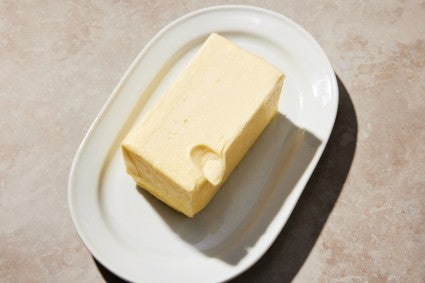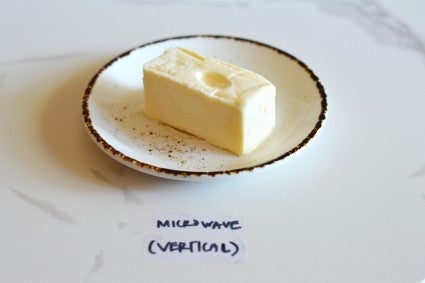Baking trials: How to soften butter quickly
Does the best method involve your microwave?


You need softened butter — and you need it now. Do you risk it all and microwave it? Do you rearrange your schedule and wait hours for it to come to room temperature on the counter? Or do you try another hack: a hot water bath or a DIY butter sauna or more?
Countless tips, tricks, and techniques abound to soften butter fast. Some are worth it, and some aren’t. We tested them all to find the best way to soften butter quickly. But first …

The best way to tell if butter is perfectly soft is by pressing your finger into it. It should feel like clay — you’re easily able to press an indent, but it has some resistance. The butter should not be greasy, and your finger shouldn’t be able to press all the way through the butter to the surface underneath — if that’s the case, it’s too hot.
Butter typically needs to be soft when creaming with sugar. During this step, sugar is whipped into the butter, creating little pockets of air from the sugar crystals that lighten and aerate the butter. This translates to pockets of air in the final baked good, which results in fluffier, taller bakes.
If the butter is too cold while creaming, the sugar won’t be able to create air pockets effectively and baked goods will be more dense; if the butter is too hot (and thus too soft), it will not hold its shape and be able to support a network of air pockets from the sugar, again making the baked good dense.
Butter also needs to be soft for other baking steps, like coating flour in a cake made using the reverse-creaming method. If the butter is too hard, it won’t be able to blend into the flour; too soft and it will make the flour mixture greasy. Similar principles apply to making buttercreams or enriched breads, in which you need to beat soft butter into a mixture. It has to hold its shape but blend easily and emulsify into the mixture.
All tests were done using Land O Lakes unsalted butter in a 73°F kitchen. Note that different temperatures and butters with different water content will result in slightly varied time ranges for each of these methods.
First, the classic method, used here as a control:
To speed up softening on the countertop, some bakers recommend slicing your butter to expose more surface area and bring it to room temperature more quickly:
Other bakers laud different hacks that create a warm environment to soften butter quickly. We tried those out:
And then there’s the microwave. Everyone says you shouldn’t microwave your butter to soften it, but are they just being dramatic?

That’s right: After testing, our favorite method involves microwaving butter, but in a very specific way. It has to be placed vertically, which exposes more surface area and results in even softening, without patches of hot and cold spots. And it all takes less than 20 seconds, so you can pick a recipe and start baking within minutes.
Note: All microwaves are different, so play around with a few seconds more or less to determine the perfect setting for your butter. These tests were conducted in a 1000-watt microwave.
If you don’t have access to a microwave, we recommend slicing butter and leaving it on the counter. You can use the 30 minutes or so it takes to soften to prepare your mise en place and get organized to bake.
And remember, if you accidentally go too far with any of these methods and end up with butter that’s halfway to melting, we have several recipes that call for melted butter. Try Melted Butter Pie Crust, Crumpets, or Rye Chocolate Chip Cookies. And if your plans change and you’re wondering if you can put softened butter back in the fridge — we’ve got the answer here.
Cover photo by Rick Holbrook; food styling by Kaitlin Wayne.

